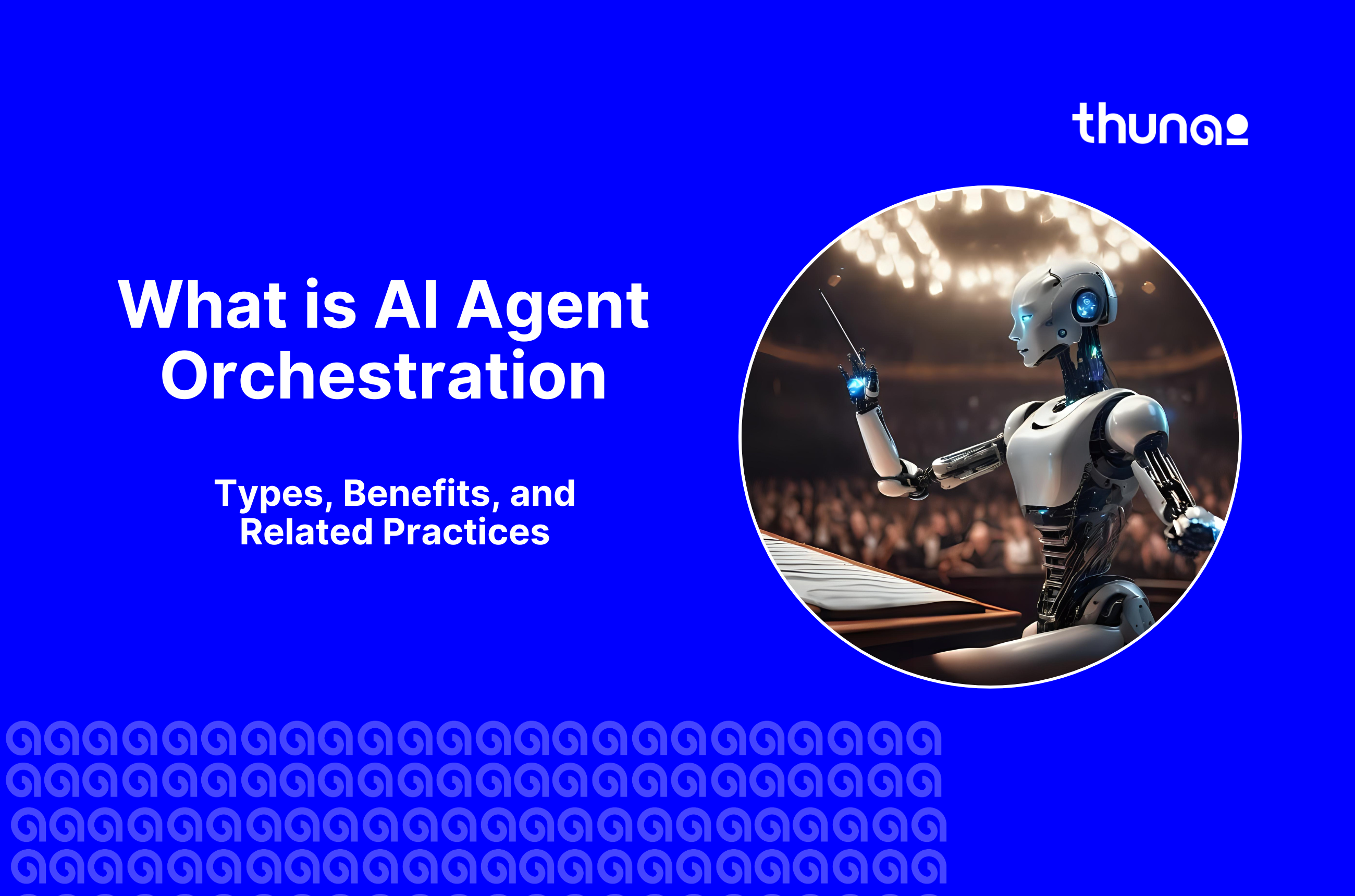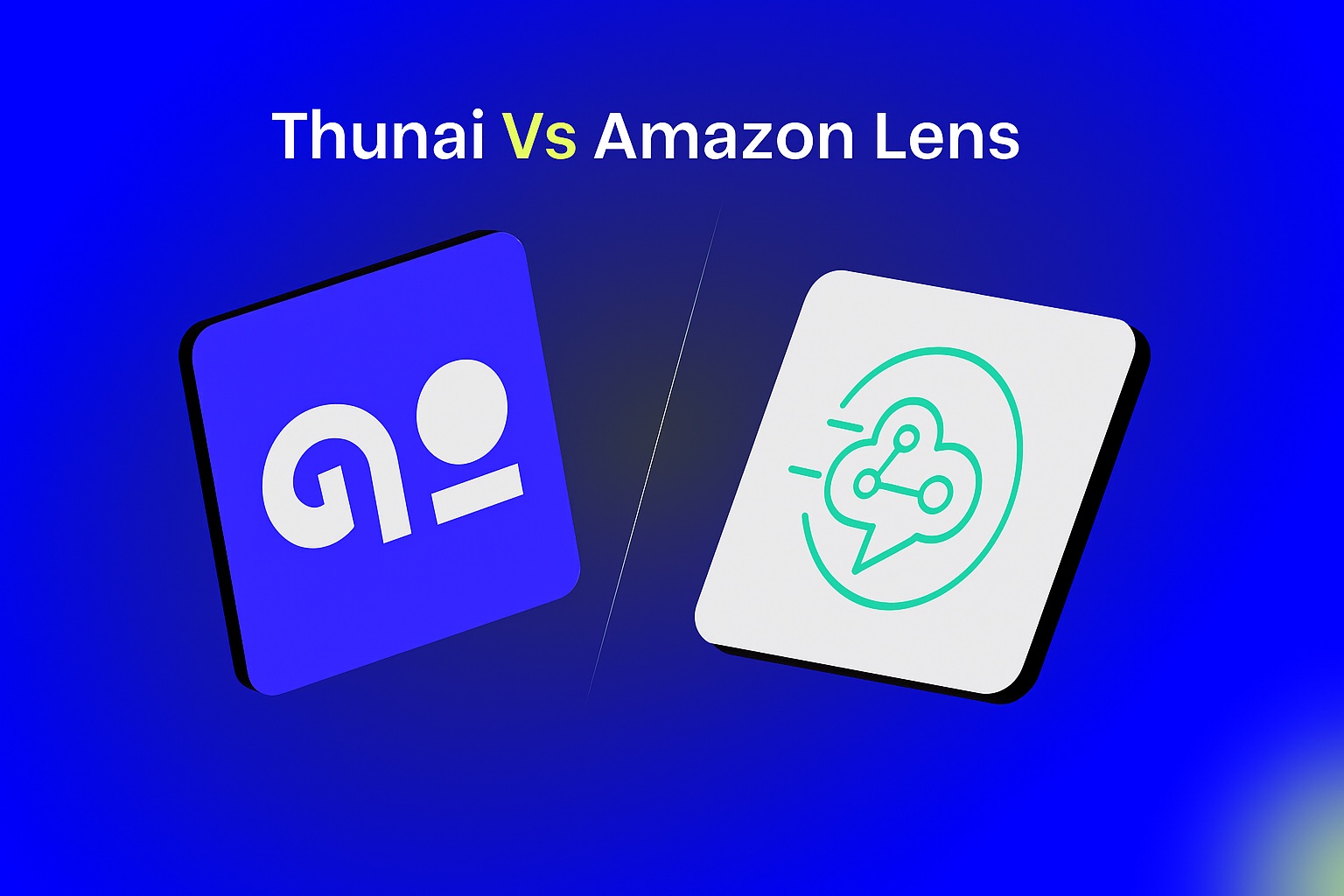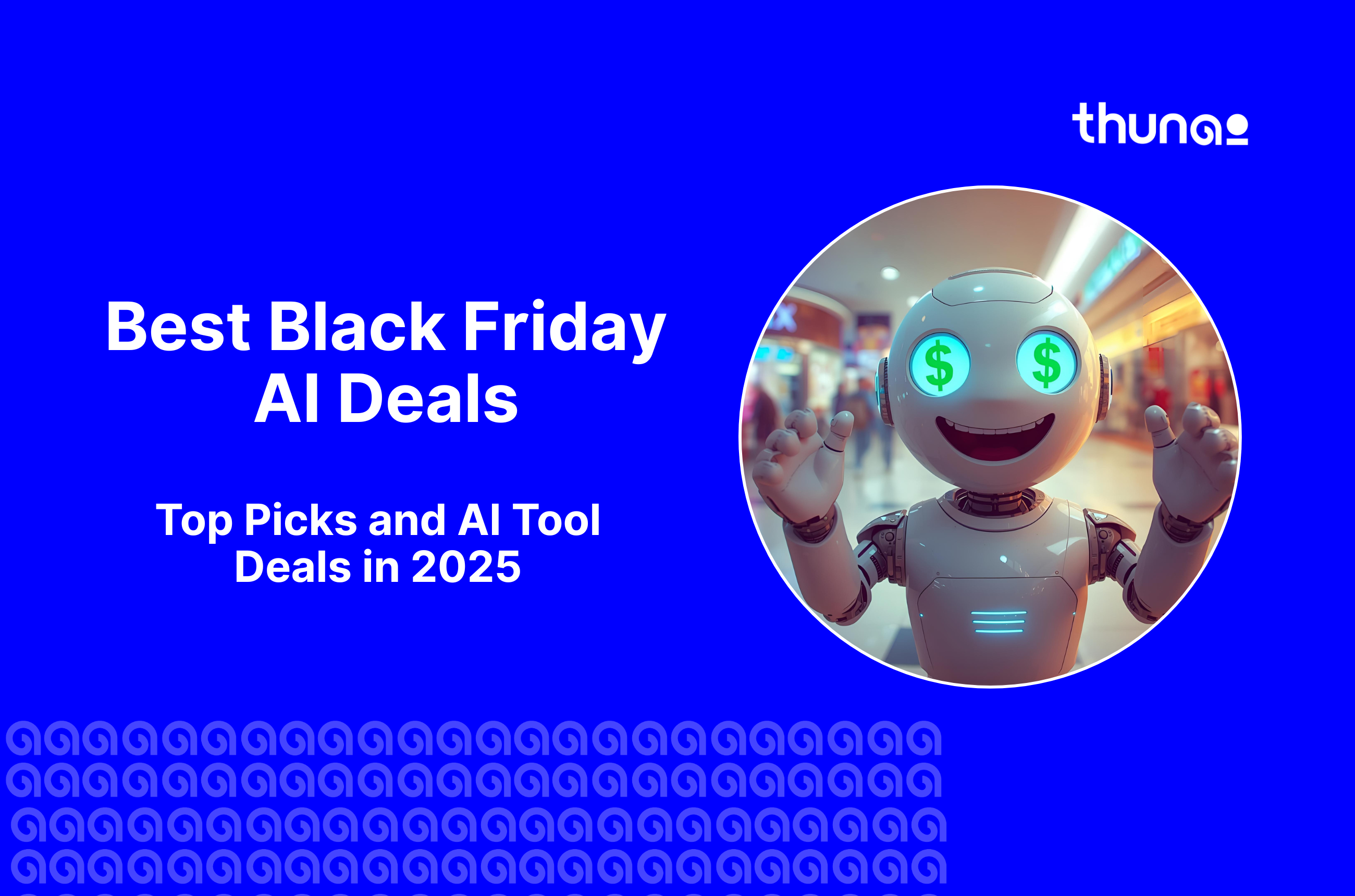What is AI Agent Orchestration - Types, Benefits, and Related Practices



Thunai learns, listens, communicates, and automates workflows for your revenue generation team - Sales, Marketing and Customer Success.
Do your AI agents stop working when you use them for ACTUAL tasks?
Building a successful AI demo is one thing, but getting reliable results is another.
This type of trust gap is a huge problem!
That’s why AI agent orchestration is the method for building enterprise-grade applications, and here’s how…
What is AI Agent Orchestration?
AI Agent Orchestration is a way to control many separate AI agents so they work together. These AI agents work inside one main system, which acts as the control layer.
This layer makes sure the AI agents can communicate with each other, share information, and work as a team. This helps them finish big, difficult tasks and workloads.
AI agent orchestration helps by splitting up a huge job to many different AI agents. Each agent is good at one specific thing, which allows a team of smart AI agents to work together.

Why is AI Agent Orchestration important?
AI agent orchestration is important; in fact, it’s an essential part of changing AI from simple tests into reliable business programs that can grow.
In fact, a 2025 survey shows that 94% of companies think this control system is important for using AI.
- This system fixes the biggest problems that stop people from using AI: trust, control, and reliability.
- Many programmers see a big difference between AI tests and real-world use. AI agents that work well in tests often fail at real jobs. The reasons for this failure include getting different answers. The AI might make things up. It can also be hard to see inside the AI to fix problems.
- This lack of trust is the biggest thing stopping companies from using systems that work on their own. AI agent orchestration is the fix for this trust problem.
A proven and trustworthy AI orchestration layer is designed to directly address these pain points by supplying three essential functions:
- Controlled Agency: AI agent orchestration brings about controlled agency by applying rules, boundaries, and deterministic backstops. This improves agent dependability without completely sacrificing their autonomy.
- Human-in-the-Loop: A well-designed AI orchestration layer makes it easy to include human checkpoints. This lets agents handle the bulk of the work. The system then escalates to humans for judgment calls or approvals.
- Centralized Governance: AI agent Orchestration gives a vendor-agnostic layer to apply security and compliance uniformly across all AI activities. This is essential for managing data privacy and creating an independent audit trail.
With so much at stake, how can a team get started?
4 Steps in AI Agent Orchestration
Setting up an orchestrated AI agent system is a structured process. The system moves from human-led design to autonomous, agent-led execution. This process can be broken down into a multi-phase lifecycle.
Phase 1: Design and Planning (Human-Led)
This first stage is led by business leaders and engineers. They decide the why and what of the system.
- Checking and Planning: The first step is to name the problem. This includes the goals for the AI helper system. It also includes the value the company will get for the money it spends.
- Breaking Down the Work: Leaders must break down big jobs into smaller tasks. This means listing all the small steps in a big business process.
- Grading and Assigning Tasks: Not all tasks are ideal for AI agents. Each small task is checked (often the task repeats, its risk level, and the data it needs). They also check if a task needs a human's understanding of feelings. Based on this check, tasks are given to the best worker. This could be an AI agent, a person, or a team of both.
Phase 2: Framework Selection and Development
This is the main building stage where the control rules and the AI agents are built. People are moving from simple AI setups to stronger, more organized control systems. Programmers using the simple setups find they are not reliable.
This problem led to the creation of better tools like LangGraph, Microsoft AutoGen, and CrewAI. These tools are made for modern, complex jobs.
Phase 3: Running and Controlling (Led by the System)
Once the system is set up, it starts to work on its own. The control system takes over from the human programmers. The steps led by the control system include:
- Choosing and assigning AI agents
- Controlling the steps of the job
- Sharing data and keeping track of information
Phase 4: Watching, Learning, and Improving (AgentOps)
Using the system is not the final step. It is the start of a process of always checking the AI agents.
This stage means always watching how well the AI agents work. It also means checking how the AI makes choices and finding places where work gets stuck.
People who run the system use this information to improve the AI's instructions, tools, and control rules. The goal is to make the system work better and cost less.
8 Different Types of AI Agent Orchestration
To design an effective agentic system, a technical leader must understand AI agent orchestration at two distinct levels.
These are the high-level Foundational Architectural Model (the system's control structure) and the low-level Design Pattern (the system's process flow).
Foundational Architectural AI Orchestration Models
These models describe the high-level structure of control and communication between agents.
- Centralized AI Orchestration: This is the most straightforward model. A single main AI agent or central controller acts as the center of the system. This master agent directs all other agents. It assigns tasks, controls the data flow, and makes the final decisions.
- Decentralized AI Orchestration: In this model, there is no single master agent. Decision-making authority is distributed across all autonomous agents. Agents interact peer-to-peer. They make decisions based on their local information.
- Hierarchical AI Orchestration: This type of system is a hybrid method. It organizes agents into a tiered command structure. A top-level Supervisor agent delegates complex tasks to intermediate Sub-Supervisor agents. These agents in turn look after teams of lower-level specialist agents.
- Federated AI Orchestration: This model is specifically designed for collaboration between independent AI agents. These agents belong to separate companies or systems. Agents work together without a central controller. They do this without fully sharing data or giving up control.
Common AI Orchestration Patterns
These patterns describe the specific flow of work and data between agents.
- Sequential AI Orchestration: This type of pattern is the most basic. Agents are chained together in a predefined, linear order. The output of Agent 1 becomes the input for Agent 2, and so on. The workflow is deterministic.
- Concurrent AI Orchestration: This pattern involves running multiple AI agents in parallel on the same task. Each agent operates independently. Each agent gives its own specialized perspective (e.g., technical, business, and creative agents all looking into the same problem).
- Group Chat Orchestration: This type of pattern is a more dynamic, non-linear pattern. Multiple agents collaborate to solve a problem. They work within a shared conversational context. This often involves a manager agent that coordinates the conversation.
- Magentic AI Orchestration: This type of pattern is an advanced one for open-ended and complex problems. These problems lack a predetermined plan. A magentic manager agent dynamically builds and refines a task ledger or plan as the context changes.
Comparing AI Agent Orchestration With Other Related Systems
A common source of confusion for enterprises is distinguishing AI agent orchestration from other kinds of technology. But how is this different from what we already use?
- vs. Multi-Agent Systems (MAS): MAS has the most basic difference. A MAS is just a group of AI agents. AI Agent Orchestration is the manager of that group. It is the set of rules and controls for how the helpers work together.
- vs. Workflow Automation (RPA): RPA follows a strict, exact set of steps. It does a task the same way every time. AI agent orchestration is flexible and works on its own. You give it a big goal. It makes its own plan to reach that goal. It can even change its plan if something unexpected happens.
- vs. Microservices: Microservices are tools that wait to be used. They do one specific job, like handling a payment, but only when another program tells them to. AI helpers are active. They decide for themselves when to use tools, including microservices, to finish a bigger goal.
- vs. Service Mesh: A service mesh helps different microservices talk to each other. It handles sending messages between them. This mesh knows where to send a message, but does not know why the message is being sent. AI agent orchestration understands the reason for the work. It does not just send messages.
AI Agent Orchestration Benefits
The benefits of AI agent orchestration are substantial. They move beyond simple gains to reveal the true, bottom-line value of artificial intelligence.
- Solves the Gen AI Paradox: Makes available the 90% of high-value, function-specific AI use cases that are typically stalled in pilot mode.
- Changes AI's Role: Shifts AI from a passive, prompt-based tool to a proactive, goal-led collaborator. This collaborator manages complex, multi-step business processes.
- Massive Cost Lowering: Delivers up to a 60% lowering of general operational costs.
- Drastic Staffing Changes: Allows an 85% lowering of staffing costs for automated tasks.
- Contact Center Savings: Lowers cost per call from an average of $5.60 down to $0.40.
- Superior Customer Support: Achieves a +90% first contact resolution rate, significantly boosting customer satisfaction.
- High Containment Rates: Successfully reaches 90% containment rates in customer support automation.
- Automates Complex Work: Moves beyond simple tasks to automate 50% of Level 2 support cases.
- Supports Business Growth: Directly impacts revenue with a 30% increase in sales productivity.
- Faster Response: Decreases customer support response times and average call times by 25%.
AI Agent Orchestration With Thunai Omni
Thunai.ai is an enterprise-grade agentic AI platform launched in 2025. The platform's main value proposition is solving the problem of siloed knowledge.
The platform ingests a company's scattered knowledge. This type of knowledge includes documents, videos, CRM data, chat transcripts, and emails. The platform then unifies this knowledge into a single, contradiction-free Thunai knowledge base.
This type of verified, centralized knowledge hub then serves as the basis for a suite of autonomous AI agents.
For example, in an omnichannel contact center, Thunai's agents are onboarded into an existing system like NICE CXone or Genesys. The platform supplies truly conversational AI agents.
These agents can handle complex inquiries. They can automate post-call summaries. They can also give real-time assistance to human agents.
Thunai.ai reports several key performance metrics achieved through its orchestration platform:
- Lowers AI hallucinations by 95% (by grounding agents in the verified Thunai knowledge base).
- Improves document retrieval accuracy by 85%.
- Lowers agent workload in contact centers by up to 70%.
- Accelerates onboarding and training processes by 60%.
- Analyzes and scores 100% of all customer interactions for Quality Assurance.
Want to see Thunai AI in action? Book a free demo!
FAQs on AI Agent Orchestration
What are the real challenges developers face when deploying AI agents to production?
A: The main challenges are making agents dependable and able to grow. Developers struggle with inconsistent agent behavior and difficult debugging. Security is also a top concern, as agents can misuse access to tools and data.
How is orchestration different from just planning?
Planning develops the optimized plan. Orchestration automates both the planning and the dispatching. The orchestrator also handles execution and can adapt the plan in real time if issues pop up.
What's the best model for a main or orchestrator agent?
This type of question starts a major developer debate. Many use expensive models for high-level reasoning. However, a good architecture may be more important, allowing cheaper models to work well.
Is a multi-agent system (MAS) more cost-effective than a single large agent?
This type of statement is not true in all cases, as a MAS adds communication overhead. Use MAS over a single agent only for necessary, complex tasks. The most cost-effective pattern often involves multiple small models managed by one larger model.
Do I really need a framework, or can I just write a code loop?
A simple code loop is not resilient and cannot manage complex, stateful interactions. A real orchestration framework supplies the essential architecture that a loop lacks. This architecture includes state management, event messaging, and tracing.




.png)


